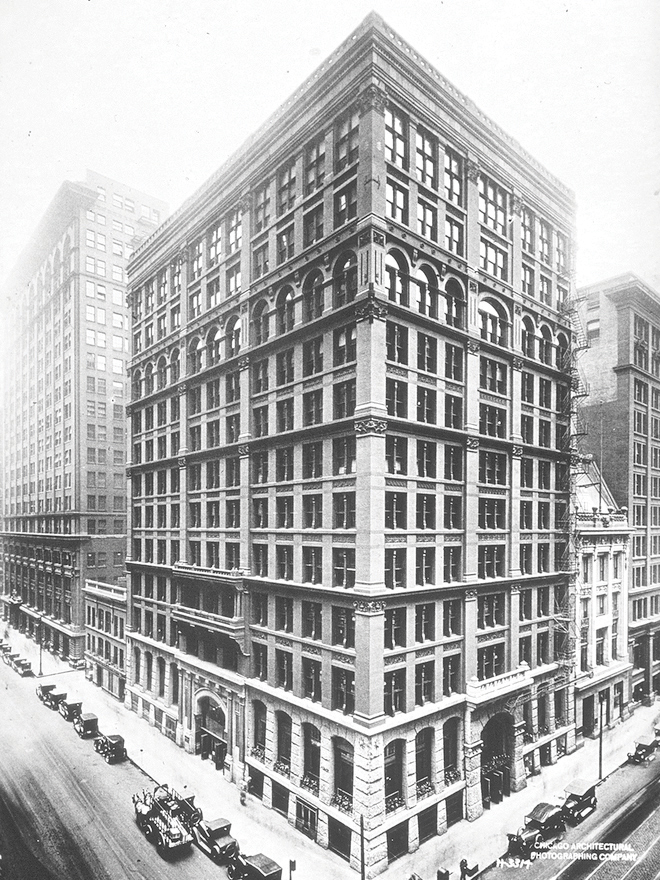The Last Word
A Tall Tale
After holding the unofficial title of the world’s first skyscraper for more than four decades, the Home Insurance Building that once stood in Chicago may soon be dethroned of that designation.
In the 1950s, author and historian Carl Condit proclaimed in one of his books about American architecture that the Home Insurance Building in Chicago was the world's first predominantly metal-framed skyscraper. For more than 45 years, the iconic building, built in 1885, graced the city's skyline until it was demolished in 1931 to make way for what is today known as the LaSalle National Bank Building.
Now the unofficial title the building once held could soon come crumbling down also.

Photo by Chicago Architectural Photographing Company
Architect William LeBaron Jenney built the Home Insurance Company's headquarters building with what at the time was a revolutionary idea, to use a metal skeleton frame rather than masonry to allow for more durability, stability and a greater height. “Prior to that, most buildings were built with load-bearing construction that placed one stone on top of another and had floors that were supported by these walls and internal columns,” said Antony Wood, CEO of the Council on Tall Buildings and Urban Habitat. The council is the same group that several years ago demoted the Willis Tower in Chicago as America's tallest building in favor of New York City's 1,776-foot-high One World Trade Center built in 2014.
Last year, members of the council's network refuted claims that the 12-story Home Insurance Building was the first tall, steel-framed building in the industrial era.
Numerous experts contend that other steel, high-rise buildings in Chicago and New York were built before the mid-1880s. For nearly 40 years, Condit's claims went undisputed, Wood said. “But in the last 20 years there's been a pretty strong backlash by academic professionals who say the building wasn't the first metal-frame skyscraper. In fact, as documentary evidence shows, it wasn't even fully metal-framed but was built with a hybrid construction with other materials such as bricks,” he said.
Wood said the decision to potentially strip the Home Insurance Building of its title hinges on the creation of criteria to determine what building meets the architectural specifications of the first skyscraper. Last year during the council's 50th anniversary, Wood and his team put together a symposium of architecture professors and historians to debate their claims and develop benchmarks and standards by which buildings are measured.
“We haven't yet reached a decision but we continue to debate the different criteria upon which to determine the first skyscraper. It may well be the first fully metal-framed building or the first tall building with an elevator,” he said.
During the mid-1880s, Home Insurance, which was founded in 1853, hired Jenney to build a lofty, fireproof building for its Chicago headquarters. Prior to its construction, many of the city's wooden structures were destroyed in the 1871 Great Chicago Fire. Jenney's innovative structural engineering design of a steel skeleton building paved the way for how today's skyscrapers are constructed. Today, the only remnant left behind of what was once unofficially the first global skyscraper is a plaque marking the spot where the iconic building once stood.



























